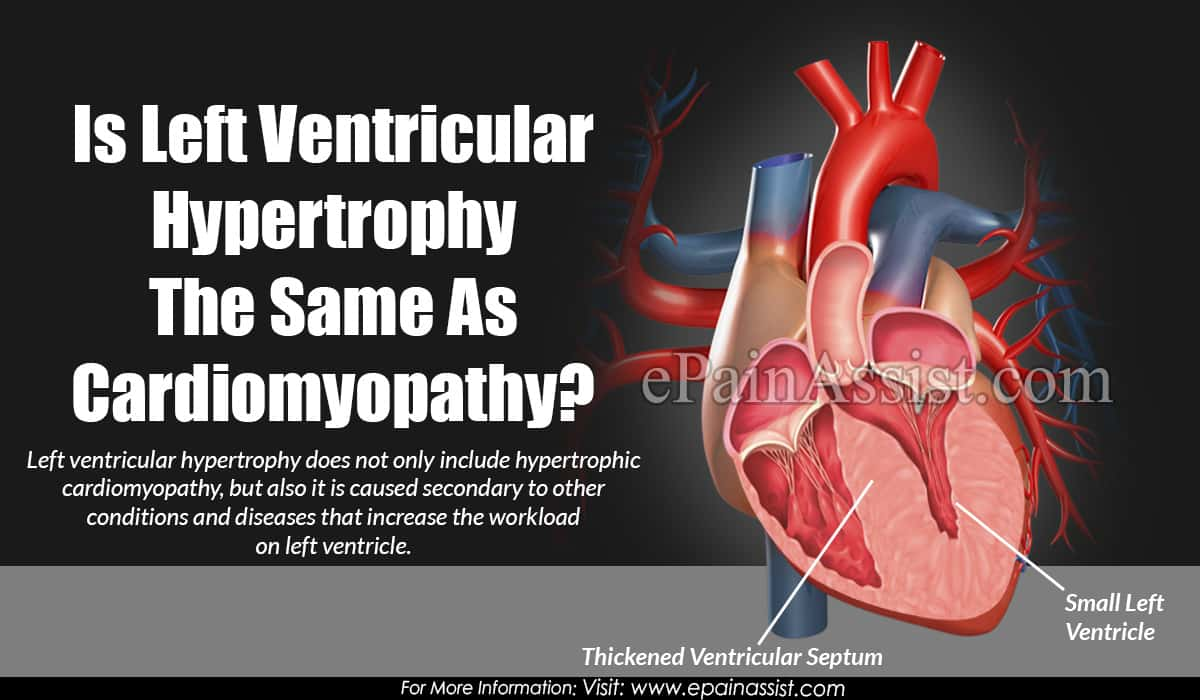Left ventricular hypertrophy is the enlargement of left ventricle of the heart. Left ventricle, which is responsible for pumping oxygenated blood throughout the body via aorta, is enlarged due to excess stress or workload on it because of several reasons. The thickening of the heart muscle may lead to weakening, stiffening or loss of elasticity of the heart muscles that may reduce the blood flow from the ventricle to the circulatory system. LVH can lead to increased risk of stroke, heart attack or sudden cardiac arrest.
Left ventricular hypertrophy is mostly secondary to other pathologies. The most common cause of left ventricular hypertrophy is chronic hypertension, found in more than 1/3rd people with hypertension. The other causes include aortic valve stenosis (narrowing of the aortic valve), aortic valve regurgitation, hypertrophic cardiomyopathy, athletic training, sleep apnea, diabetes, arrhythmia, atrial fibrillation and enlargement of aorta.
The thickening of the left ventricle is an adjusting/adapting mechanism related to pressure overload secondary to above causes, which over time can cause stiffening or weakening of heart muscle and serious cardiac or systemic effects. These include reduced blood supply to the heart and other body parts, abnormal heart rhythm, irregular heartbeat, inadequate supply of oxygen to the heart, stroke, shortness of breath, loss of consciousness and cardiac arrest.
Initially, left ventricular hypertrophy may present with no symptoms, but with time when the condition worsens and gets severe, the symptoms start manifesting in the form of chest pain, shortness of breath, fatigue, dizziness and palpitations.
What is Cardiomyopathy?
Cardiomyopathy is a disorder of the structure and function of myocardial heart muscle with no signs of hypertension, coronary artery disease, valvular, congenital heart disease or any extra workload on heart. It can be classified into other types, namely, hypertrophic cardiomyopathy, dilated cardiomyopathy, arrhythmogenic cardiomyopathy and restrictive cardiomyopathy. Cardiomyopathy carries high morbidity and mortality rate and is the reason for sudden death in young individuals and athletes.
Hypertrophic cardiomyopathy is inherited as an autosomal dominant disorder that is characterized by disorientation of cardiac myocytes caused by mutation in genes responsible for encoding sarcomeric proteins (cardiac beta-myosin, troponin and alpha-tropomyosin). Hypertrophic cardiomyopathy leads to enlargement of the myocardium of left ventricle causing left ventricular hypertrophy. The hypertrophy is generally present in the anterior ventricular septum, although it can be found in any part of left ventricle. This leads to impaired diastolic filling and abnormality in mitral valve causing obstruction of blood flow from left ventricle, diastolic dysfunction, myocardial ischemia and risk for arrhythmias.
Hypertrophic cardiomyopathy may present with no symptoms to severe symptoms of dyspnea (shortness of breath), syncope, chest pain, palpitations, arrhythmias and decreased ability to exercise.

Is Left Ventricular Hypertrophy Same As Cardiomyopathy?
Thus, both these terms, left ventricular hypertrophy and cardiomyopathy are bigger and are not restricted to each other. Cardiomyopathy is sub-classified into other types, one of which is hypertrophic cardiomyopathy that may cause left ventricular hypertrophy. Left ventricular hypertrophy caused due to hypertrophic cardiomyopathy is genetic in nature and is not secondary to any pathology that might cause pressure overload on left ventricle. It is simply a mutation in the genes responsible for proper orientation of sarcomeres, which form the muscle of the left ventricle. This leads to thickening of the left ventricle muscles.
Whereas, left ventricular hypertrophy does not only include hypertrophic cardiomyopathy, but also it is caused secondary to other conditions and diseases that increase the workload on left ventricle. This increased workload on left ventricle causes the left ventricle to work harder, thus, causing the muscles to thicken, stiffen and weaken with time. Hypertrophic cardiomyopathy is just one of the causes of left ventricular hypertrophy. Therefore, it would be improper to say left ventricular hypertrophy and cardiomyopathy are the same, as both these terms have a broader meaning and are not restricted to one another, but signify much more than just their limited similarity of left ventricular thickening.
Also Read:
- Cardiomyopathy – Causes, Symptoms, Diagnosis, Treatment
- Takotsubo Cardiomyopathy or Broken Heart Syndrome: Causes, Symptoms, Treatment
- Restrictive Cardiomyopathy: Causes, Symptoms, Treatment
- Dilated Cardiomyopathy: Causes, Symptoms, Treatment, Prevention, Prognosis
- Are Cardiomyopathy And Congestive Heart Failure The Same Thing?
- What is the Life Expectancy Of A Woman Who Has Cardiomyopathy?
